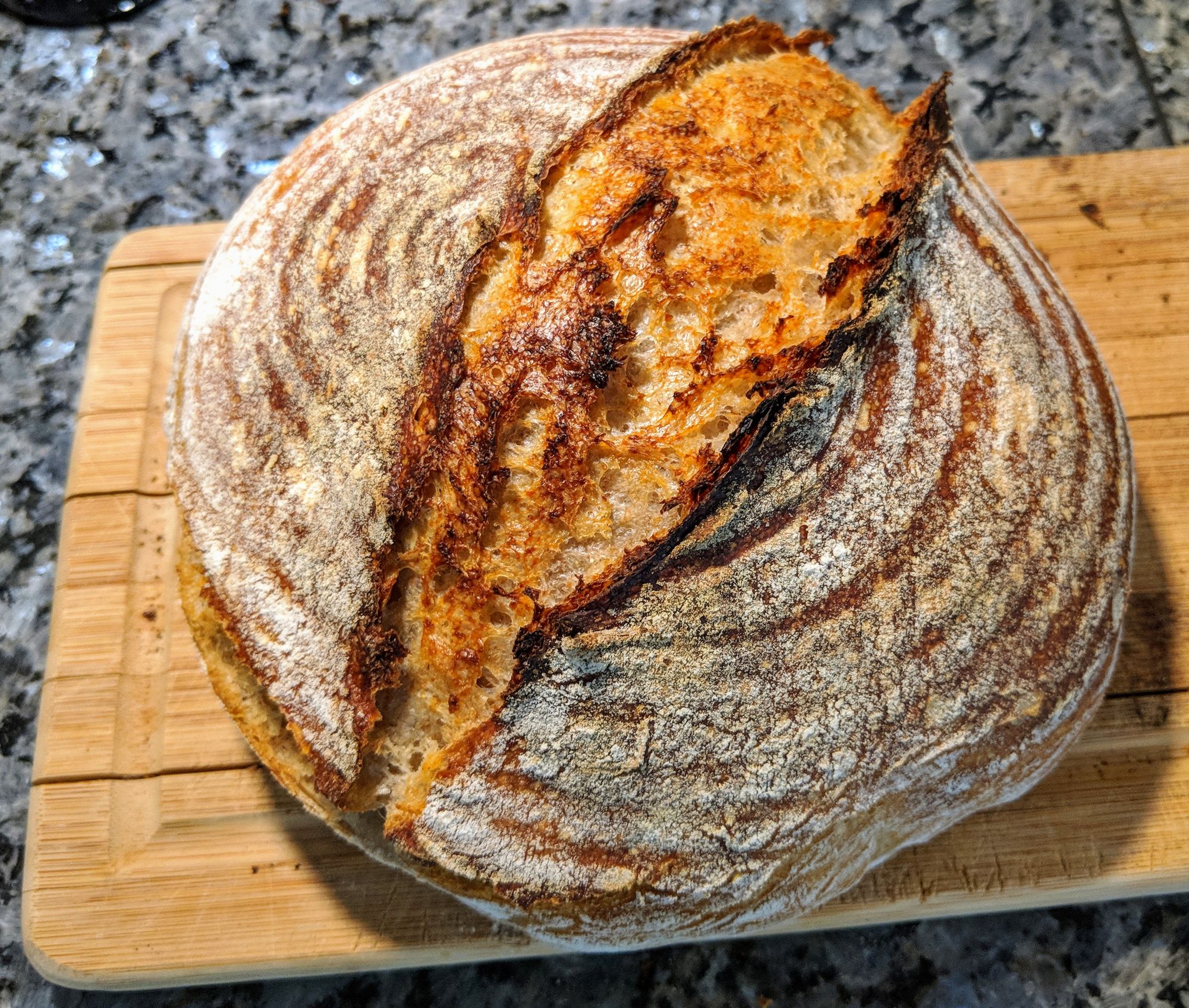It began with a bread maker. We were happy with the fresh warm bread from Coop but I somehow got it into my mind that homemade would be better. The research for a good bread maker uncovered an intriguing tidbit: many people only ever use their bread maker a couple times and then give up.
Once the bread maker arrived I looked for a recipe. I wanted to use whole wheat flour which, I learned, can make things a bit more complicated. While reading about that, I also learned what sourdough is. I had heard the word before but wasn’t sure what it meant. What was clear, though, was that a bread maker would not be of much help in making sourdough whole grain bread. The bread maker went back into its box after making one single somewhat underwhelming yeasted whole wheat bread.
I got a Dutch Oven and started making bread by hand instead. There was a learning curve – the most useful thing I did was to keep a journal of what I tried and what the results were. Here’s the first attempt, dated July 20, 2018:
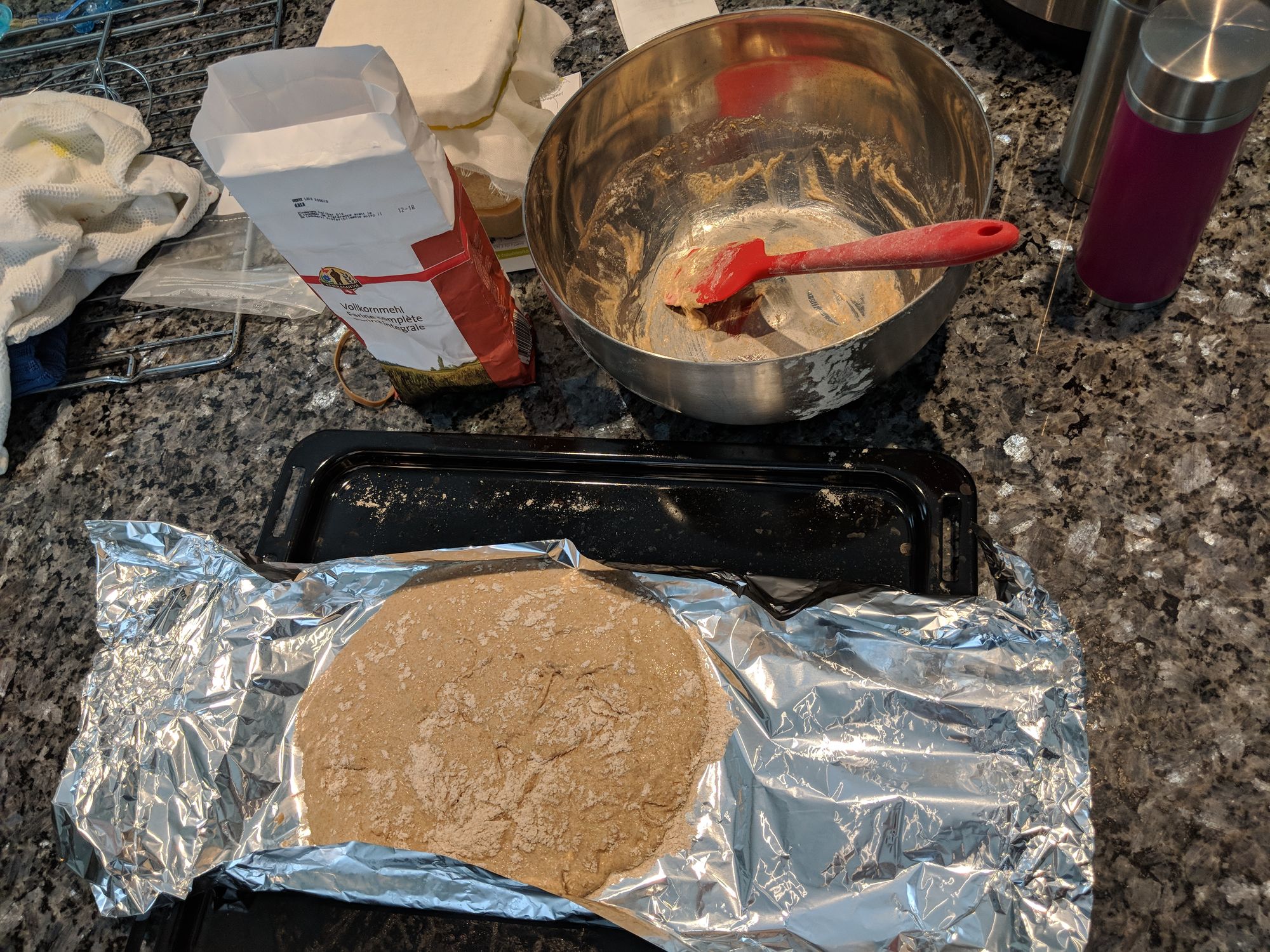
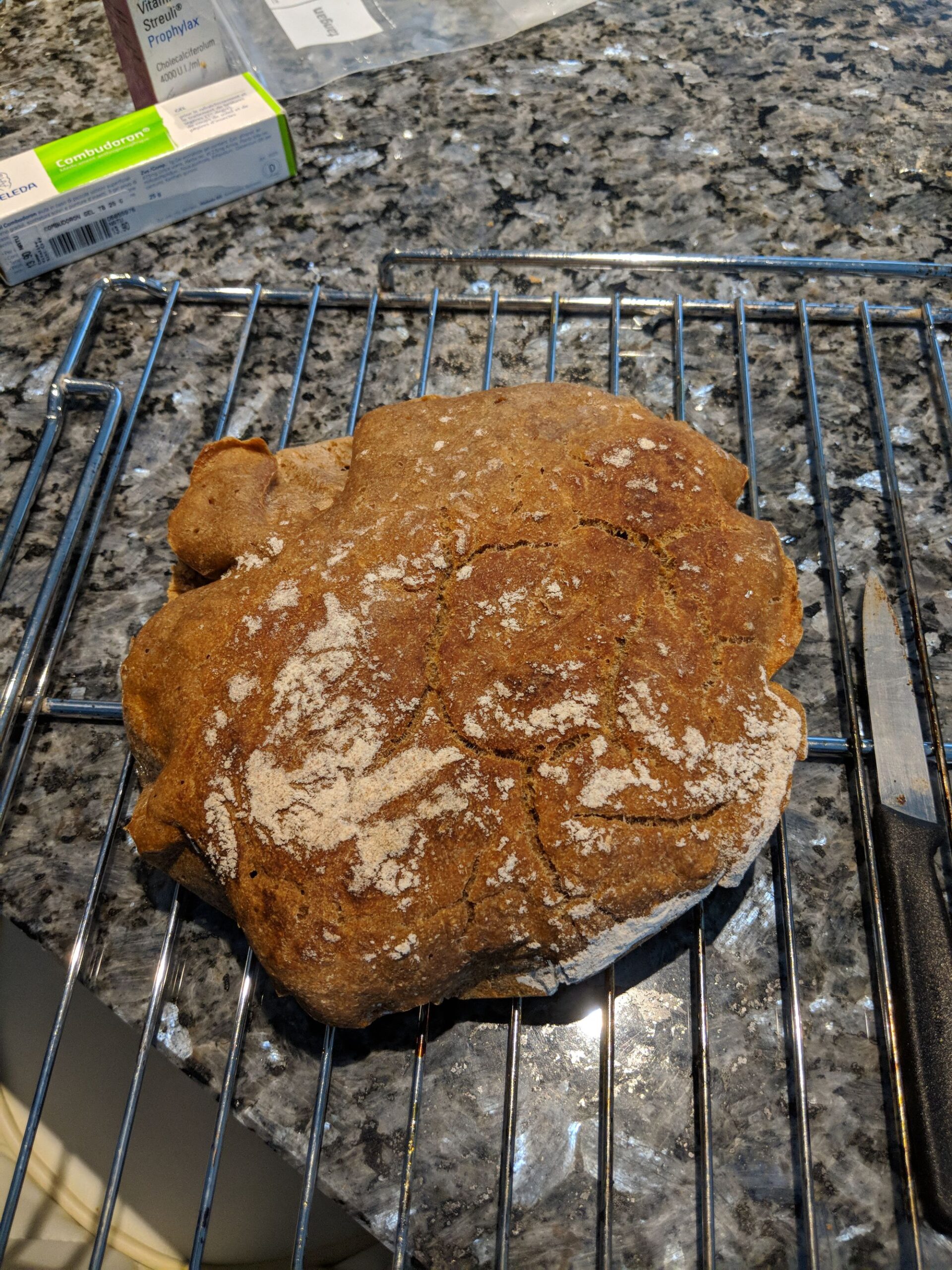
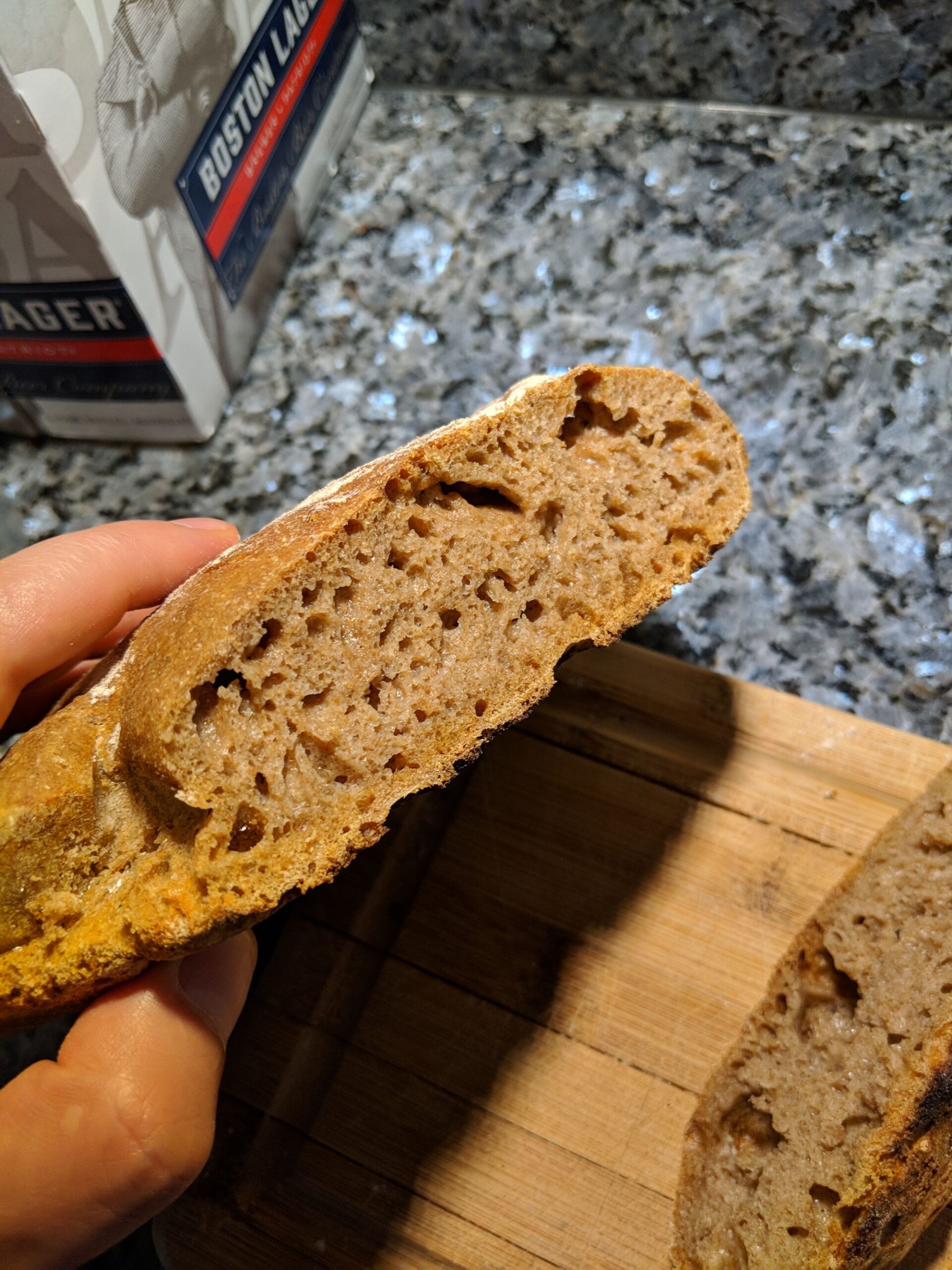
One of the lessons learned from that first attempt was that recipes from the internet may or may not work. It took a while to really grasp, but it turns out that the web is filled with baking recipes that are impossible to reproduce for various reasons. The Fresh Loaf is a great community that I learned a lot from. I also read a lot of books about bread in the beginning, with mixed results. The one that helped me the most and consistently produced good results was Josey Baker Bread.
I got a sourdough starter and continued baking and keeping notes most days. The results got better looking and tastier.
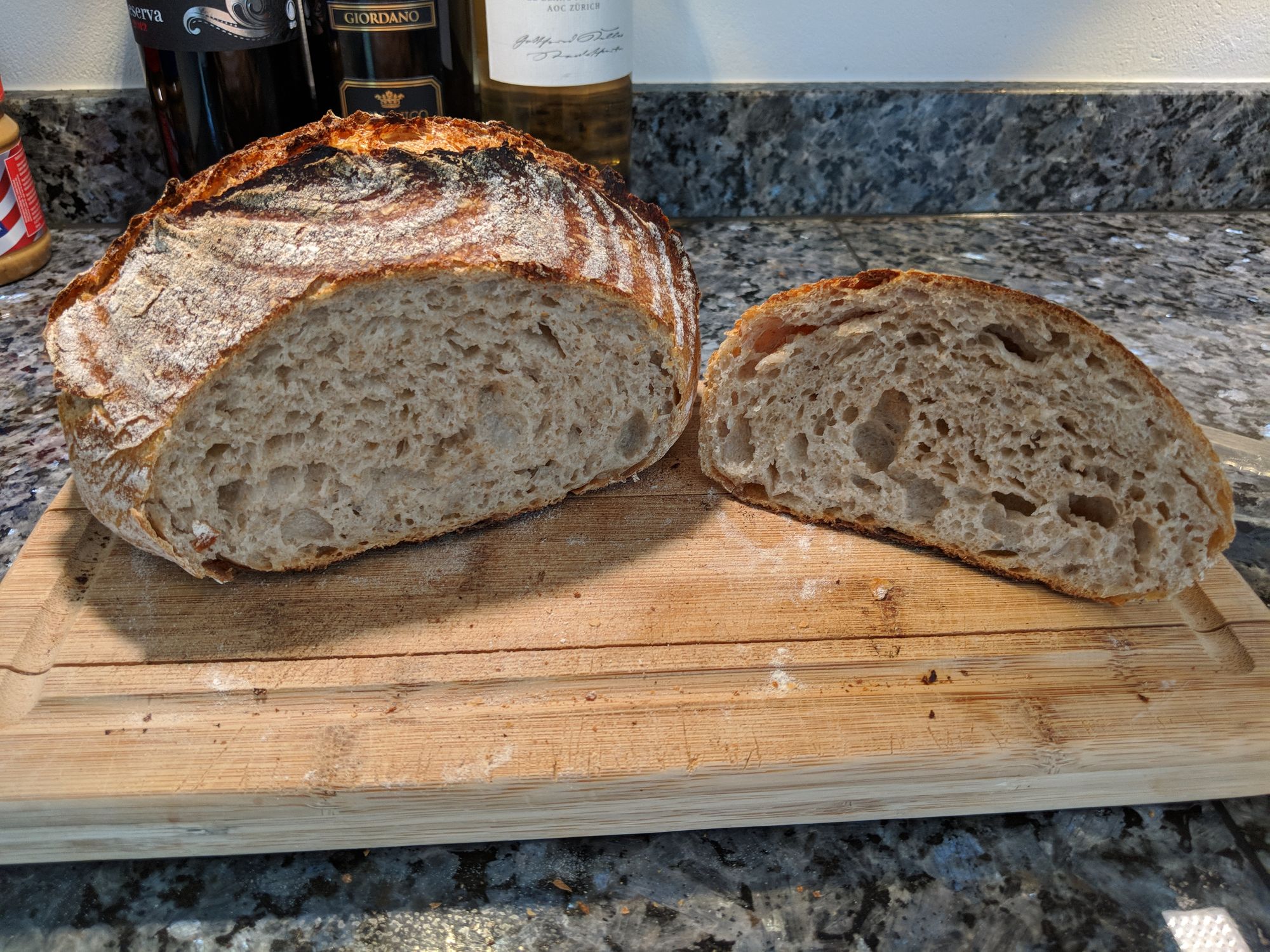
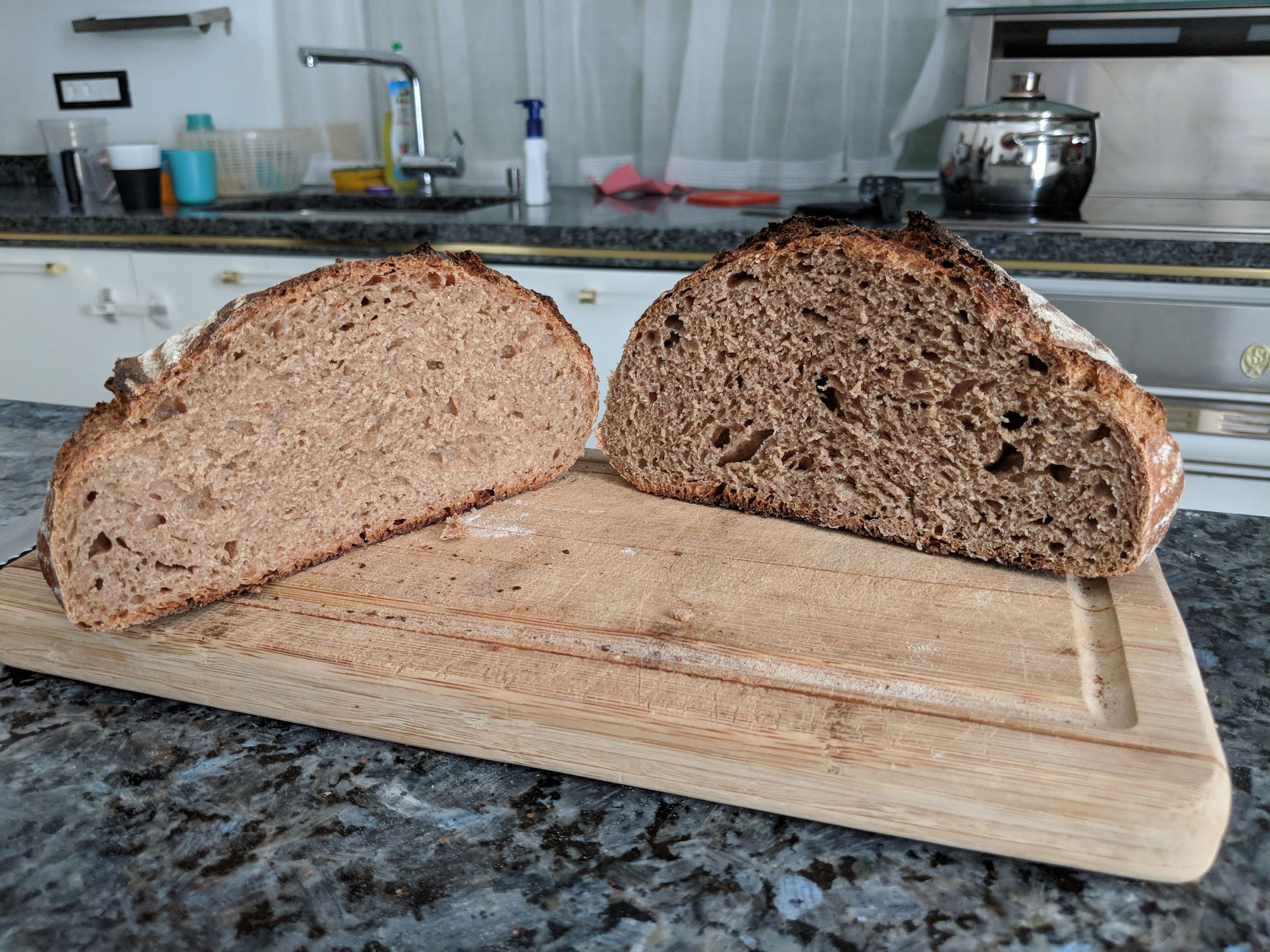
There was also the occasional dabbling with other baked goods.
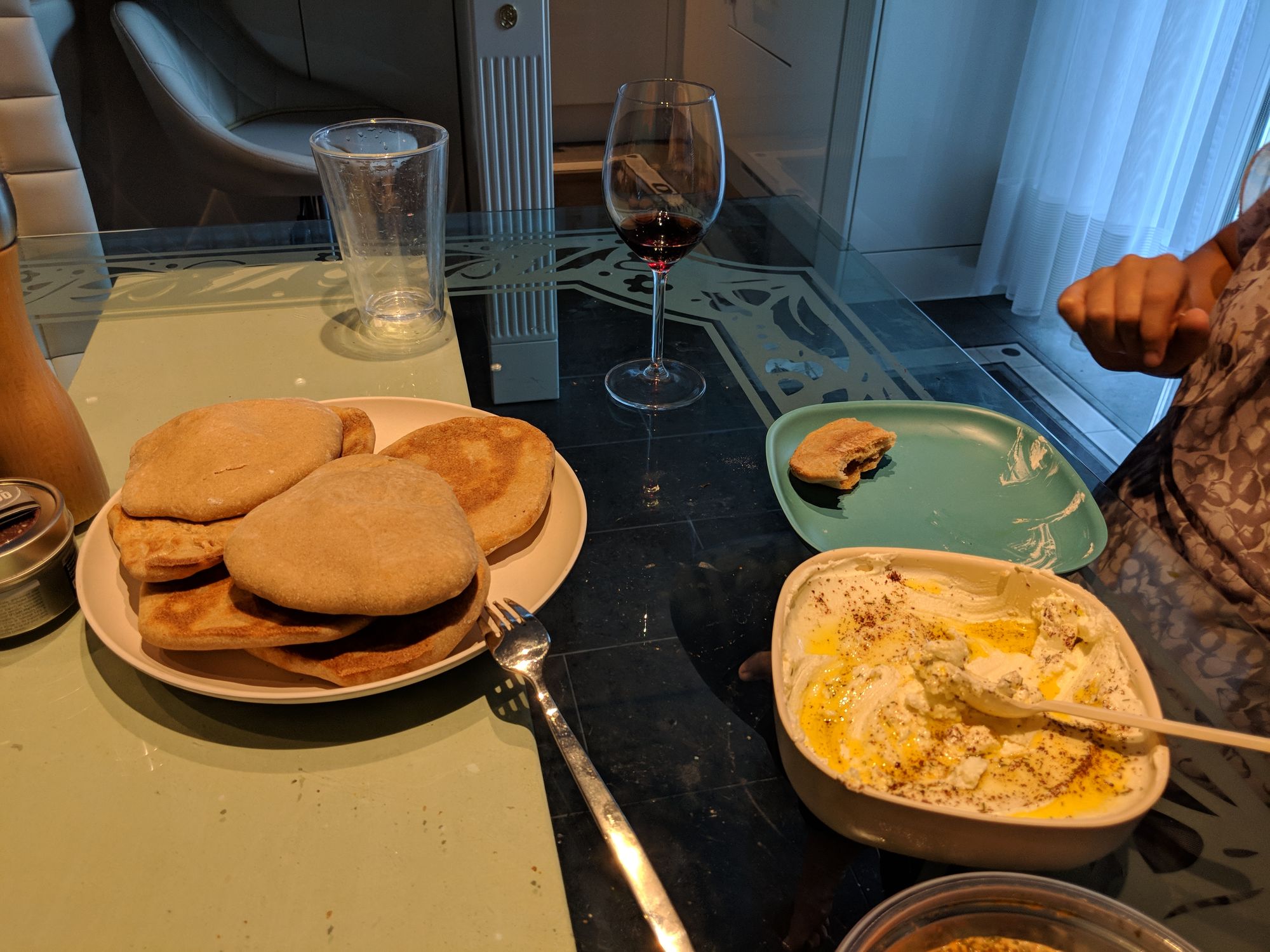
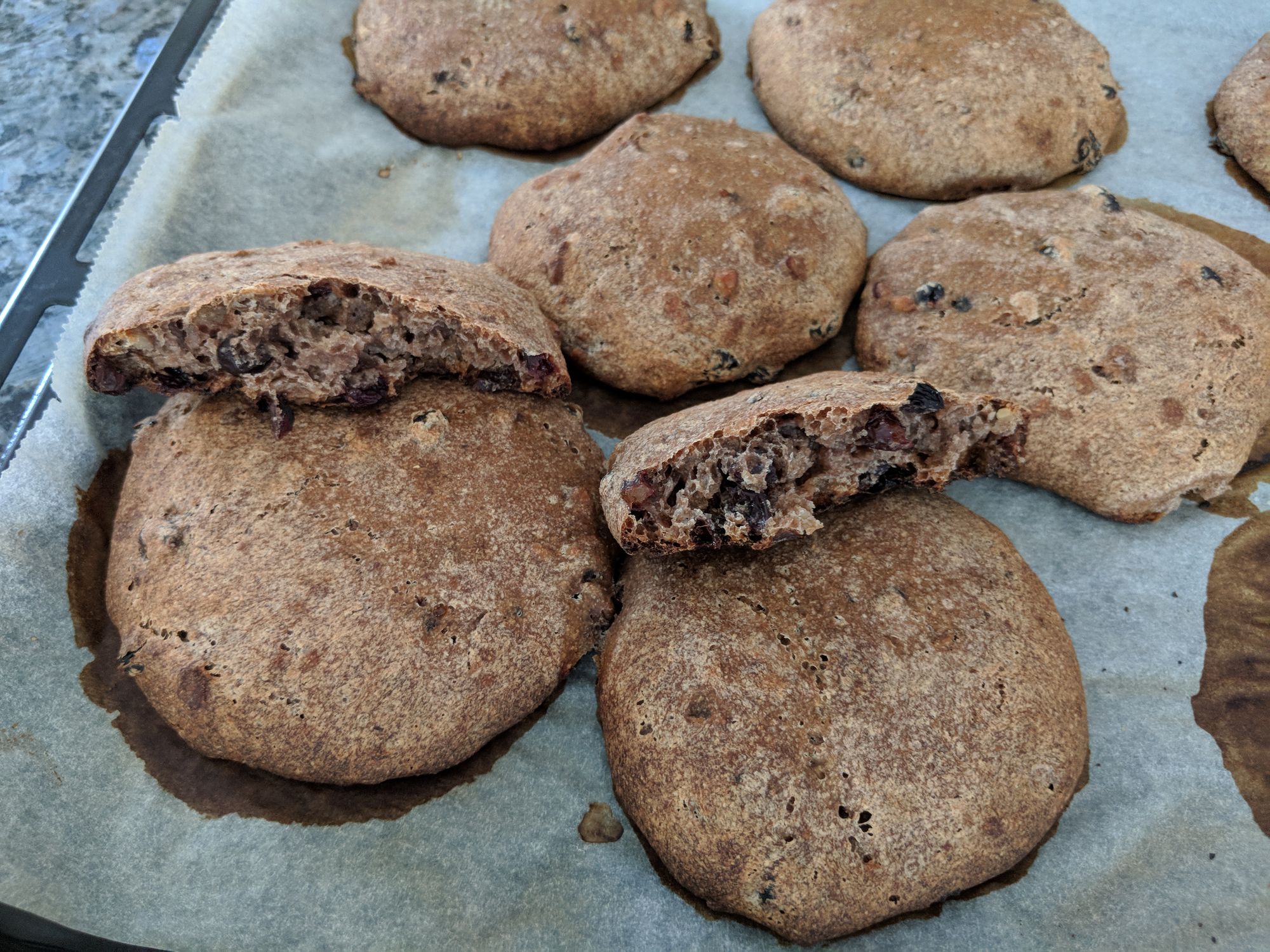
Given that I almost exclusively used whole grain flour, the next frontier was milling my own. Inês got me a Mockmill 200 for my birthday and I bought a whole bunch of different grains: wheat, rye, spelt, kamut, einkorn, emmer, durum, barley, buckwheat…

Right away, there was a noticeable improvement in taste. Milling your own flour seems like outright baking geekery when you first hear about it, but it’s definitely worth the trouble if you like whole grain bread.
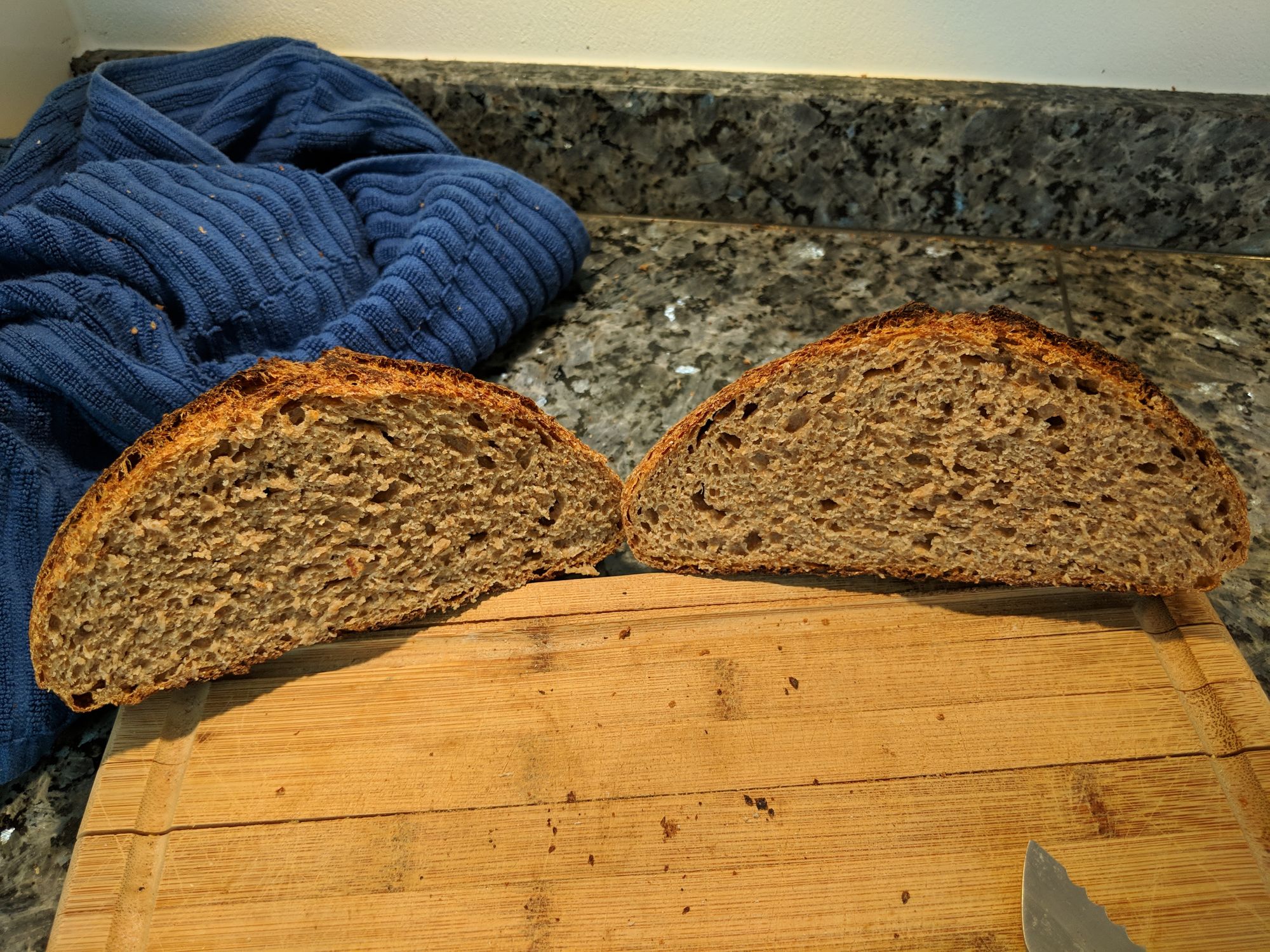
I had assumed that whole grain bread is always better, but I learned that things are more nuanced than that. On the one hand, using the entire grain – freshly milled – retains a lot more of the nutrition from the germ and bran that is normally discarded to make white flour. On the other hand, the bran has anti-nutrients that not only prevent absorbing minerals from the rest of the flour, but also bind to ones already in our body. Scary stuff. In principle the anti-nutrients can be minimized with thorough fermentation, though things may be more complex still. I also learned that the enzymes in rye flour are particularly good at dealing with anti-nutrients, so I’ve been adding some rye flour to many recipes.
Experimenting with all the different grains led to clear winners and losers:
- Spelt and kamut: the favorites and base components of most breads nowadays. Tasty, healthy, and still reasonably easy to shape and keep shaped. Unfortunately difficult (spelt) or seemingly impossible (kamut) to source in Portugal.

- Wheat: no longer as used but still a reliable component for some recipes (e.g. pita breads). Easiest to shape and keep in shape.
- Rye: vital for feeding the sourdough starter and – in small amounts – a key flavor and nutrient enhancer in many recipes. In larger amounts or rye-only breads it turns into a strange, difficult to master beast. I managed to make several tasty rye breads, but only after many iterations.

- Einkorn and emmer: “ancient grains” with a reputation of health benefits. They have distinctive tastes but are quite difficult to handle and shape. Einkorn dough, in particular, has an irritating habit of sticking to everything. Both nice in mixed recipes, but overall felt like more trouble than it was worth.
- Durum wheat: I learned only after buying it that it’s typically used for pasta due to its low/different gluten content and resulting ease of going through pasta machines. As a whole grain flour it’s similar to wheat in taste but almost impossible to shape, so there was no point in using it.
- Barley: distinctive taste and crumb texture. Not the easiest to handle either, but not as bad as einkorn and emmer.
- Buckwheat: no gluten at all (it’s a pseudo-grain). We eat it cooked but besides some experiments as a flavor addition to other recipes, I didn’t make much bread with it.
Aside from one-off recipes and experimentation, I then had to figure out a minimal effort pipeline for keeping the family supplied with fresh homemade bread. By now, we’d all gotten used to eating it but I didn’t want making it to feel like work. I ended up making dough for 3 breads at once roughly once per week. After bulk fermentation I’d split it up into 3 separate boxes and store them in the fridge. I would bake one of them roughly every other day depending on when we needed bread. This worked very well for a long time.
A new challenge occurred when we started eating cleaner. Grains were completely out for a month, so I started exploring the world of gluten-free bread. There are many flour and seed options for that, but most recipes don’t involve fermentation. I wanted to keep making sourdough, but I didn’t yet find a recipe I could make work. More experimentation is needed.
Today – even after relaxing our diet – we don’t really eat much bread anymore. I make one of our favorite recipes every couple months or so, for special occasions or as gifts. The sourdough starter lives on in the fridge.
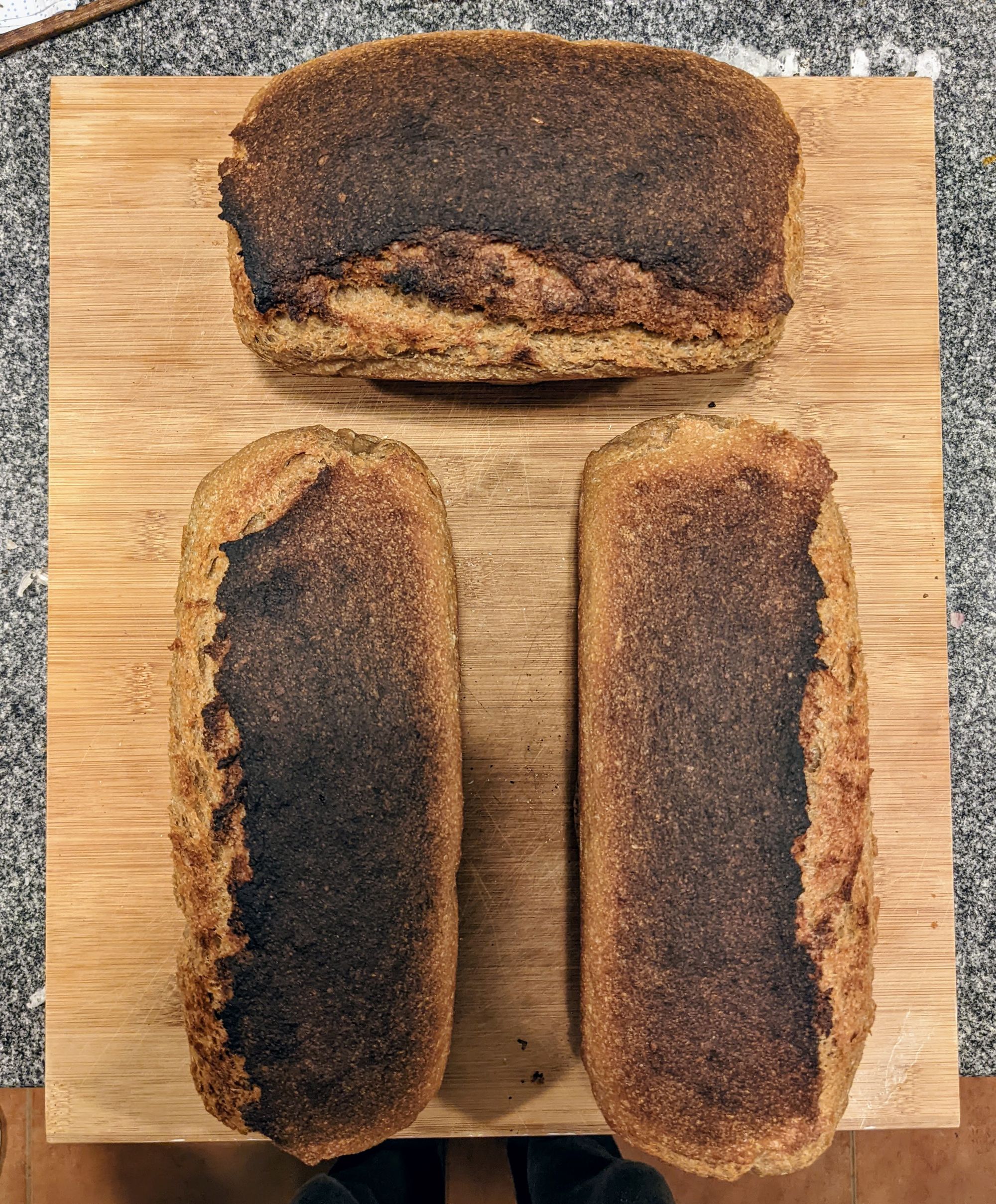
Baking sourdough bread was a fascinating craft to explore. It can be a thoroughly enjoyable hobby for anyone who enjoys eating bread. Will you also give it a try?

